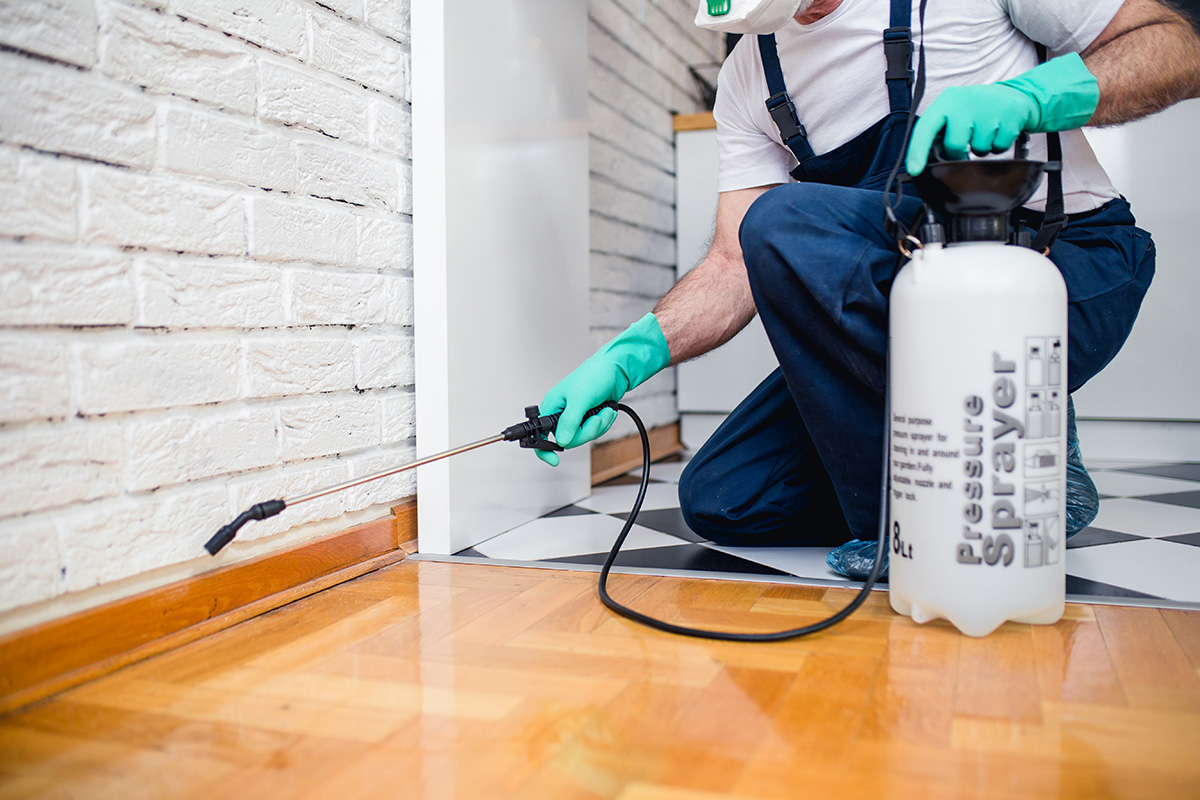Reliable A1 Bed Bug Exterminator Charlotte - Get Rid of Bed Bugs Fast
Bed Insect Therapy Malfunction: Contrasting Chemical Vs. Non-Chemical Solutions
In the realm of parasite control, particularly when handling the persistent problem of bed bugs, the option between chemical and non-chemical therapy remedies can be a crucial one. Both techniques offer distinct benefits and downsides, influencing elements such as performance, safety considerations, and general price. By analyzing the nuanced information of each approach, a more clear understanding of which path to go after in addressing a bed bug invasion can be acquired.
Effectiveness of Chemical Treatments
Chemical treatments for bed insect invasions have been widely identified for their rapid and potent efficiency in eradicating these insects. When taking into consideration the effectiveness of chemical treatments, it is vital to recognize that they can provide a detailed and fast solution to a bed bug problem. Expert pest control operators frequently count on insecticides to target bed insects at different phases of their life cycle, including nymphs, eggs, and adults. These chemicals usually work by interrupting the bed insects' nerve system, resulting in paralysis and eventual death.
Moreover, chemical therapies have the advantage of providing recurring results, indicating that they can remain to remove bed pests even after the first application. This recurring activity is specifically useful in combating any kind of potential re-infestations. In addition, the fast action of chemical therapies can bring alleviation to individuals encountering serious bed bug problems, allowing them to reclaim control of their home promptly.
Safety And Security Interest In Chemical Solutions
When using chemical solutions for bed pest treatment is ensuring the security of owners and the environment,One vital aspect that needs mindful consideration. While chemical therapies can be reliable in eliminating bed pests, they might position threats otherwise dealt with effectively. One of the primary security concerns with chemical services is the prospective injury they can cause to human wellness. Direct exposure to particular chemicals used in bed bug treatments can cause respiratory system issues, skin inflammation, or various other damaging responses, especially in individuals with pre-existing conditions or sensitivities. Furthermore, inappropriate application or dose of chemical pesticides can cause toxic deposits lingering in the treated area, positioning long-term wellness dangers to occupants.
In addition, the ecological impact of chemical solutions is an additional substantial factor to consider. Some chemicals utilized in bed insect treatments might be harmful to beneficial pests, wildlife, and environments if they leach into the dirt or water supply. It is necessary to utilize chemical treatments judiciously, adhering to safety and security guidelines, and considering much less hazardous options to mitigate these threats and ensure the secure and effective management of bed pest invasions.
Benefits of Non-Chemical Strategies
Thinking about the potential safety and security worries and environmental influence connected with chemical solutions for bed pest treatment, discovering non-chemical techniques presents an encouraging choice with numerous distinct benefits. Non-chemical approaches use a much safer option for families, specifically those with pets, individuals, or children conscious extreme chemicals. These techniques their explanation remove the risks of exposure to harmful compounds, decreasing the potential for unfavorable wellness effects. In addition, non-chemical treatments are eco friendly, as they do not add to air or water air pollution, making them a sustainable option for parasite control.
Additionally, non-chemical remedies can be effective in targeting bed bugs, consisting of hard-to-reach locations where chemical therapies may not penetrate - A1 charlotte pest control companies. Techniques such as warm treatment, vacuuming, vapor cleansing, and mattress encasements give complete elimination without the use of harmful chemicals.
Limitations of Non-Chemical Treatments

Furthermore, non-chemical treatments usually call for numerous applications to attain successful eradication. This can be taxing and may not always ensure full elimination of all bed bugs and their eggs, especially in hard-to-reach or surprise areas.
In addition, the success of non-chemical treatments greatly counts on proper application and thoroughness, which can be challenging for people without specialist proficiency. Insufficient application of non-chemical techniques may result in incomplete removal, causing relentless problems and the demand for additional treatments.
As a result, while non-chemical therapies have their benefits, it is necessary to recognize these constraints and consider them when establishing one of the most reliable approach for managing bed pest problems.
Price Contrast: Chemical Vs. Non-Chemical Options
Given the restrictions associated with non-chemical therapies, an important facet to assess in the context of bed pest administration is the price comparison in between chemical and non-chemical options. In comparison, non-chemical treatments like warmth therapy or heavy steam can be extra costly, with prices ranging from $1,000 to $6,000 for an entire home. While the first cost of chemical therapies might seem reduced, numerous treatments might be called for to completely get rid of the infestation, potentially raising the overall expense.
Verdict

Thinking about the prospective safety concerns and ecological effect associated with chemical solutions for bed pest therapy, exploring non-chemical approaches offers an appealing alternative with numerous unique advantages.Provided the limitations linked with non-chemical treatments, an important facet to examine in the context of bed bug monitoring is the expense contrast between chemical and non-chemical options. In comparison, non-chemical treatments like warm treatment or vapor can be much more pricey, with expenses varying from $1,000 to $6,000 for an entire home. While the first expense of chemical therapies may appear lower, numerous Read Full Article treatments might be required to completely eradicate the invasion, potentially boosting the general cost.In verdict, when comparing chemical and non-chemical bed pest treatment choices, it is important to consider effectiveness, safety and security, advantages, restrictions, and expense.